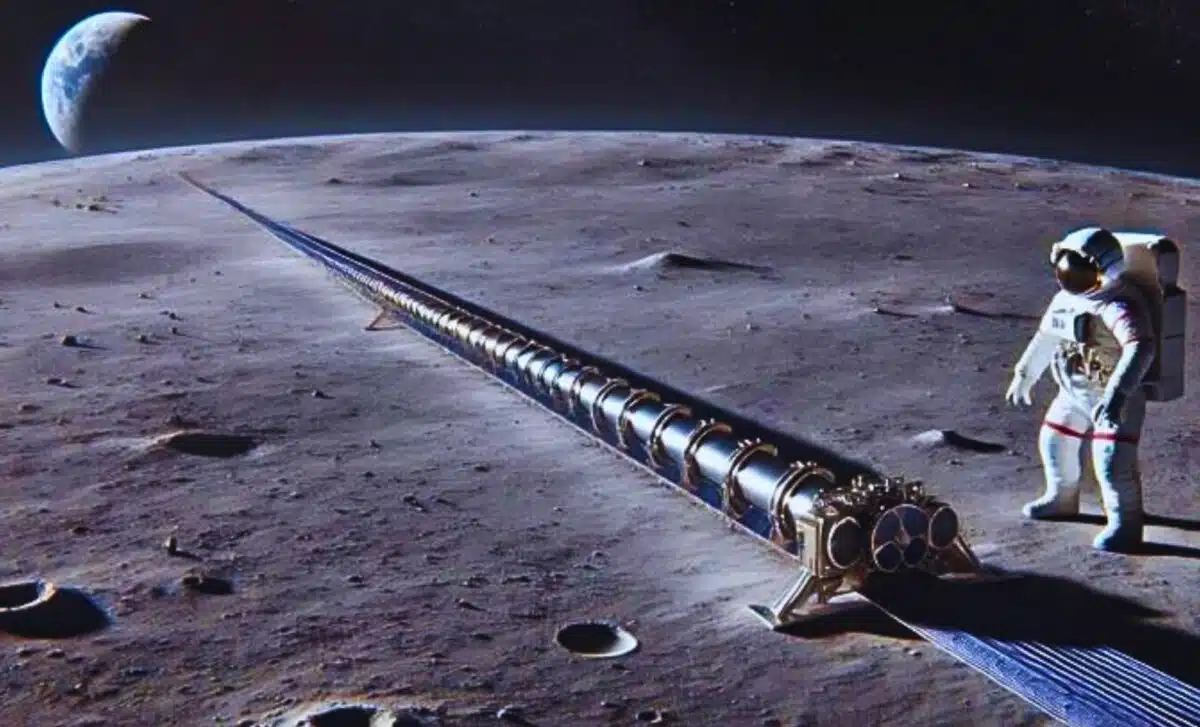
Arezki Amiri Published on November 20, 2024
Collected at: https://dailygalaxy.com/2024/11/moons-mass-driver-the-groundbreaking-tech-that-could-make-mars-colonization-reality/
A mass driver on the Moon—a concept straight out of science fiction—is inching closer to reality, promising to transform how we explore the solar system. Imagine launching resources directly into space, bypassing Earth’s costly gravity constraints, and propelling humanity into a new era of interplanetary exploration.
What is a Mass Driver?
A Mass Driver, or Lunar Mass Accelerator, is a futuristic infrastructure capable of using the Moon’s low gravity—just one-sixth of Earth’s—to launch lunar materials directly into orbit. By leveraging lunar regolith (the Moon’s dust) as raw material, this propulsion system could supply construction resources for space stations, habitats, and even interplanetary missions.
Pioneering scientist Pekka Janhunen of the Finnish Meteorological Institute proposes an innovative way to exploit the Moon’s unique gravitational features to achieve efficient, low-cost launches. Unlike Earth, where gravity demands immense energy for liftoff, the Moon’s environment is perfectly suited for this game-changing technology.
Turning Challenges Into Advantages
One of the Moon’s quirks is its uneven gravitational field, mapped extensively by NASA’s GRAIL mission. These so-called “gravitational anomalies,” often seen as hurdles for spacecraft navigation, could serve as key launch points. By strategically placing a mass driver in one of these zones, materials could be catapulted into orbit or even further into the solar system.
Achieving this would require reaching a manageable orbital velocity of 1.7 km/s, far more feasible than Earth’s requirements. The materials would then be intercepted by reusable space tugs, reducing both costs and energy demands for missions to Mars, asteroid belts, or deep-space ventures.
Technical Specifications of a Lunar Mass Driver
The design of a lunar mass driver involves advanced engineering tailored to the Moon’s unique conditions. Here are the key components and specifications driving this vision forward:
- Propulsion technology: Electromagnetic acceleration systems are proposed, using a linear motor design to rapidly propel payloads along a track. These systems reduce the need for chemical propellants.
- Launch velocity: Payloads need to achieve a velocity of 1.7 km/s to reach stable orbit, significantly less than the 11.2 km/s escape velocity on Earth.
- Material adaptability: Lunar regolith can be processed and shaped into compact, launchable units. These materials could then be transported to orbital stations for further use in space construction.
- Energy requirements: Solar power is expected to be the primary energy source for the driver, with batteries providing backup for consistent operation during lunar nights.
Moon vs. Earth Launch Dynamics
| Feature | Moon | Earth |
|---|---|---|
| Gravity | 1.62 m/s² (16.5% of Earth) | 9.8 m/s² |
| Escape Velocity | ~2.4 km/s | 11.2 km/s |
| Atmospheric Drag | None | High |
| Energy Demand | Low | High |
| Launch Infrastructure | Under development | Well-established |
By exploiting these advantages, a lunar mass driver has the potential to revolutionize not only how we explore space, but also how we construct sustainable systems beyond Earth.
Hurdles to Overcome
The concept is tantalizing, but turning it into reality involves monumental challenges. The Moon’s hostile environment—with temperature swings from -173°C to 127°C and abrasive lunar dust—demands innovative engineering solutions. Moreover, transporting the components of a mass driver to the Moon would require multiple Earth launches, further inflating costs.
Another significant obstacle? Collaboration. This project will likely need a coalition of NASA, the European Space Agency (ESA), and even the Chinese Space Agency, not to mention private-sector giants like SpaceX. Without international cooperation, funding, and shared expertise, this bold vision could remain a distant dream.

Leave a Reply